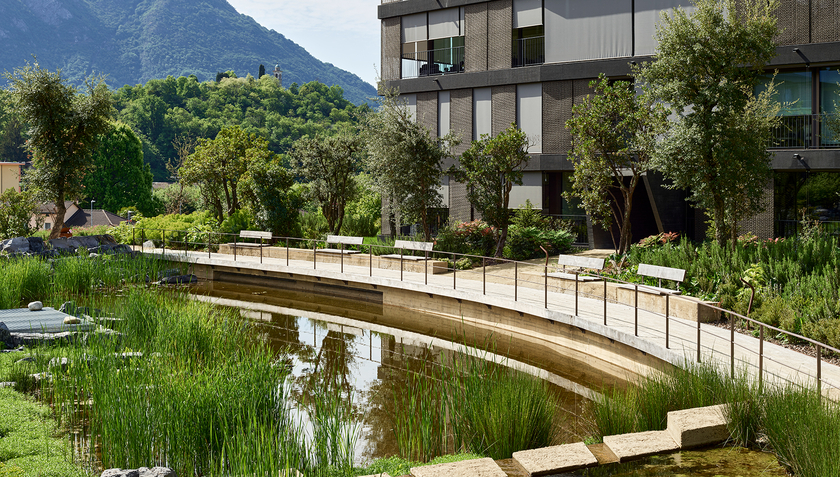Chapter 5: Clever cities and communes create blue-green infrastructures

A network of near-natural habitats in urban areas is an attractive solution to mitigate the effects of climate change and reduce biodiversity loss. This requires the multifunctional design of blue-green infrastructure and cooperation between the various players from different specialist areas.
Content
(in German and French only)
- Storing water instead of draining it away
- The sponge city concept
- Box 9: Blue-green versus ecological infrastructure
- Efficient water storage
- Natural air conditioning systems
- A haven for biodiversity
- Cooperation as a basic prerequisite
- Box 10: Blue habitats are central to urban biodiversity
- Strategic planning of ecological infrastructure
Key messages
> Blue-green infrastructure in cities provides solutions to key challenges (e.g. climate adaptation, flood protection, natural hazard prevention, preservation of biodiversity and quality of life). The pooling of ecological and engineering expertise and cooperation between different players is essential.
> The aim is to develop and implement sponge city ideas for every neighbourhood and every commune. Biodiversity must be considered at every step. It is important to identify synergies through multiple uses on expensive urban land.
> For the long-term preservation of biodiversity, it is not enough to opportunistically build ecological infrastructure, instead science-based planning of infrastructure type and placement is required.
Contacts
Co-Leaders of the research initiative
 | Prof. Dr. Florian Altermatt Tel. +41 58 765 5592 Send Mail |
 | Prof. Dr. Catherine Graham Tel. +41 44 739 2361 Send Mail |
Scientific Coordinator
 | Dr. Morgane Brosse Tel. +41 58 765 5798 Send Mail |
